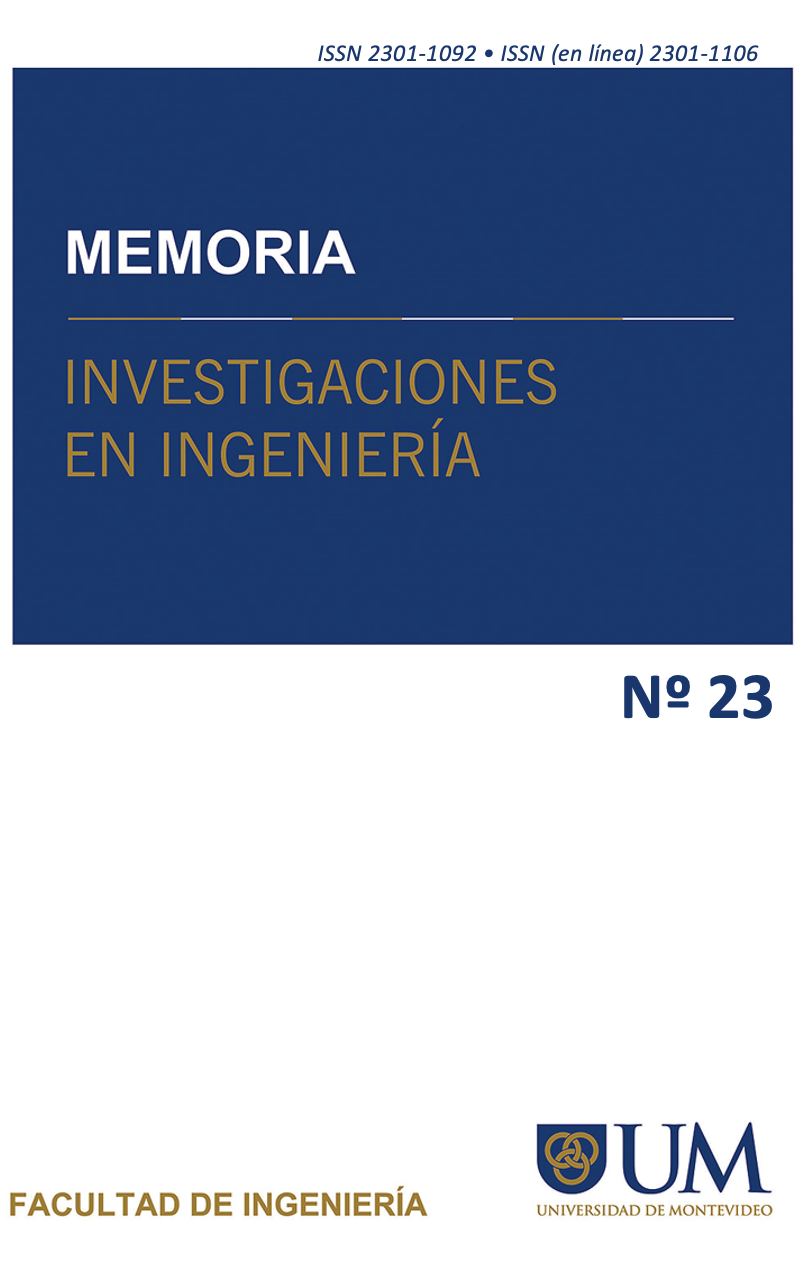Arquiteturas de Pipeline Assíncronas Register Less NULL Convention Logic (RL-NCL) Usando Portas Básicas
DOI:
https://doi.org/10.36561/ING.23.7Palavras-chave:
Circuitos assíncronos, NCL, RL-NC, FPGA, PipelineResumo
Circuitos assíncronos é uma alternativa para projetar sistemas digitais que vem despertando o interesse de muitos pesquisadores na área de projeto digital principalmente devido ao seu baixo consumo de energia e robustez. Um dos paradigmas de projeto mais atraentes de circuitos assíncronos é o NULL Convention Logic (NCL). O pipeline é uma técnica muito comum usada em circuitos digitais para obter alto rendimento. Embora seja possível implementar um pipeline usando portas NCL, trabalhos recentes mostraram que pipelines sem registro são possíveis usando portas NCL modificadas. Neste artigo propomos duas novas arquiteturas de pipeline NCL Register-Less (RL-NCL) e dois novos métodos para projetar portas NCL, que podem ser implementadas até mesmo em Field Programmable Gate Arrays (FPGAs) ou usando o método de células padrão. O novo design da arquitetura proposta foi capaz de alcançar uma redução média de área de 27,32%, uma redução média de latência de 14,1% e um aumento médio de throughput de 5,54% em comparação com a arquitetura de pipeline NCL convencional.
Downloads
Referências
G. C. Duarte and D. L. Oliveira, “A novel asynchronous pipeline architecture with less-registers using null convention logic,” in 2021 IEEE URUCON, 2021, pp. 36–41.
B. H. Calhoun, Y. Cao, X. Li, K. Mai, L. T. Pileggi, R. A. Rutenbar, and K. L. Shepard, “Digital circuit design challenges and opportunities in the era of nanoscale cmos,” Proceedings of the IEEE, vol. 96, no. 2, pp. 343–365, 2008.
L. Ye, Z. Wang, Y. Liu, P. Chen, H. Li, H. Zhang, M. Wu, W. He, L. Shen, Y. Zhang, Z. Tan, Y. Wang, and R. Huang, “The challenges and emerging technologies for low-power artificial intelligence iot systems,” IEEE Transactions on Circuits and Systems I: Regular Papers, vol. 68, no. 12, pp. 4821–4834, 2021.
T. Le Thanh, L. T. Tri, and H. Trang, “Power consumption improvements in aes decryption based on null convention logic,” International Journal of Circuits, Systems and Signal Processing, vol. 15, pp. 254–264, 2021.
S. M. Nowick and M. Singh, “High-performance asynchronous pipelines: An overview,” Ieee design & test of computers, vol. 28, no. 5, pp. 8–22, 2011.
K. M. Fant and S. A. Brandt, “Null convention logic/sup tm/: a complete and consistent logic for asynchronous digital circuit synthesis,” in Proceedings of International Conference on Application Specific Systems, Architectures and Processors: ASAP ’96, 1996, pp. 261–273.
S. Smith and J. Di, Designing Asynchronous Circuits using NULL Convention Logic (NCL), 2009.
M. Chang, P. Yang, and Z. Pan, “Register-less null convention logic,” IEEE Transactions on Circuits and Systems II: Express Briefs, vol. 64, no. 3, pp. 314–318, 2017.
L. Zhou, R. Parameswaran, F. A. Parsan, S. C. Smith, and J. Di, “Multi-threshold null convention logic (mtncl): An ultra-low power asynchronous circuit design methodology,” Journal of Low Power Electronics and Applications, vol. 5, no. 2, pp. 81–100, 2015.
S. Mutoh, T. Douseki, Y. Matsuya, T. Aoki, S. Shigematsu, and J. Yamada, “1-v power supply high-speed digital circuit technology with multithreshold-voltage cmos,” IEEE Journal of SolidState Circuits, vol. 30, no. 8, pp. 847–854, 1995.
A. D. Bailey, J. Di, S. C. Smith, and H. A. Mantooth, “Ultra-low power delay-insensitive circuit design,” in 2008 51st Midwest Symposium on Circuits and Systems, 2008, pp. 503–506.
J. Sparso and S. Furber, Principles of Asynchronous Circuit Design - A Systems Perspective, 1st ed. Springer, 2001.
D. Khodosevych and A. A. Sakib, “Evolution of null convention logic based asynchronous paradigm: An overview and outlook,” IEEE Access, vol. 10, pp. 78650–78666, 2022.
V. Satagopan, B. Bhaskaran, W. K. Al-Assadi, S. C. Smith, and S. Kakarla, “Dft techniques and automation for asynchronous null conventional logic circuits,” IEEE Transactions on Very Large Scale Integration (VLSI) Systems, vol. 15, no. 10, pp. 1155–1159, 2007.
F. A. Parsan and S. C. Smith, “Cmos implementation comparison of ncl gates,” in 2012 IEEE 55th International Midwest Symposium on Circuits and Systems (MWSCAS), 2012, pp. 394–
D. L. Oliveira, O. Verducci, L. A. Faria, and T. Curtinhas, “A novel null convention logic (ncl) gates architecture based on basic gates,” in 2017 IEEE XXIV International Conference on Electronics, Electrical Engineering and Computing (INTERCON), 2017, pp. 1–4.
D. L. Oliveira, O. Verducci, V. L. V. Torres, R. Moreno, and L. A. Faria, “Synthesis of QDI Combinational Circuits using Null Convention Logic Based on Basic Gates,” Advances in Science, Technology and Engineering Systems Journal, vol. 3, no. 4, pp. 308–317, 2018.
S. M. Nowick, “Automatic synthesis of burst-mode asynchronous controllers,” Stanford, CA, USA, Tech. Rep., 1995.
S. Yang, “Logic synthesis and optimization benchmarks user guide: Version 3.0,” MCNC Technical Report, Tech. Rep., Jan. 1991.
Publicado
Como Citar
Edição
Seção
Licença
Copyright (c) 2022 Gabriel C. Duarte, Duarte L. Oliveira

Este trabalho está licenciado sob uma licença Creative Commons Attribution 4.0 International License.






















